The bridge towers above the Tarn Valley and the aim of Lord Foster was to design a bridge with the ?delicacy of a butter fly?. Lord Foster designed a bridge that enhances the natural beauty of the valley, with the environment dominating the scene rather than the bridge. The bridge appears to float on the clouds despite the fact that it has seven pillars and a roadway of 1½ miles in length. On first sight, the impression is of boats sailing on a sea of mist. The roadway threads through the seven pillars like thread through the eye of a needle.
The bridge was opened by President Jacques Chirac. In his speech he praised the design saying that it was a ?monument to French engineering genius? and ?a miracle of equilibrium?.
The bridge was entirely privately financed and cost 394 million euros (272 million pounds, 524 million dollars). The aim is to cut the travelling time to southern France, removing the bottle neck at Millau, through the completion of the motorway between Paris and the Mediterranean.
The bridge took only three years to complete with new engineering techniques being employed. The traditional method of building a cable stay bridge involves building sections of the deck (roadway) and using cranes to put them in position. Because of its height, 900 feet above the valley floor, a new technique had to be developed.
First, the towers were built in the usual way, with steel reinforced concrete.
The road way was built on either side of the valley and rolled into position, until it met with precision in the centre. This technique had never been tried before and it carried engineering risks. However, it proved to be an efficient method of deploying the roadway.


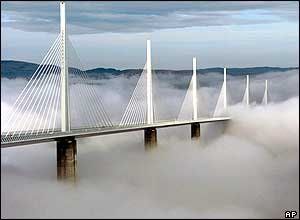
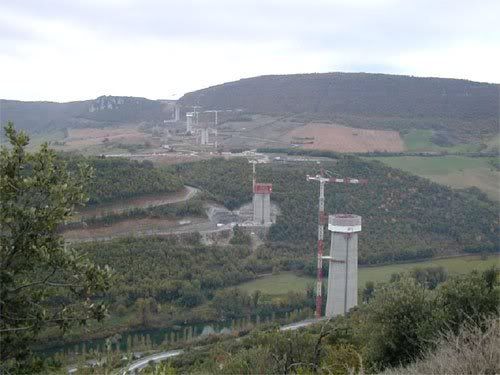
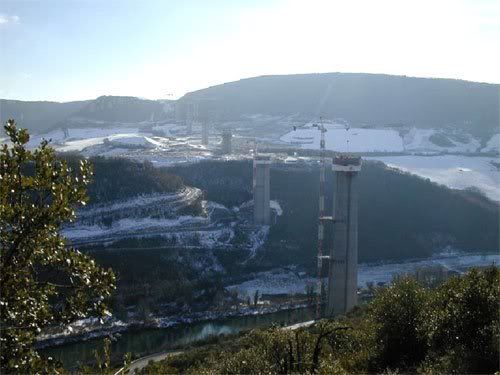
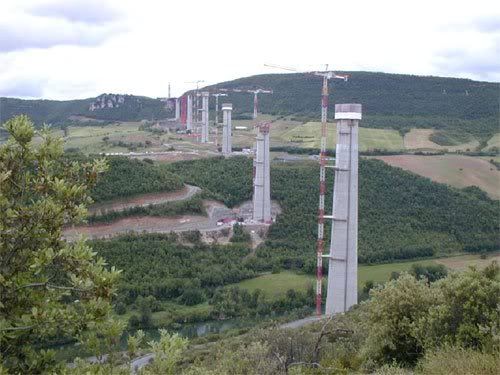

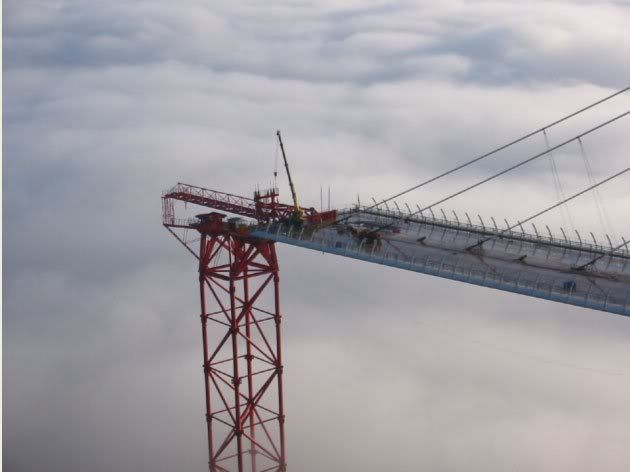
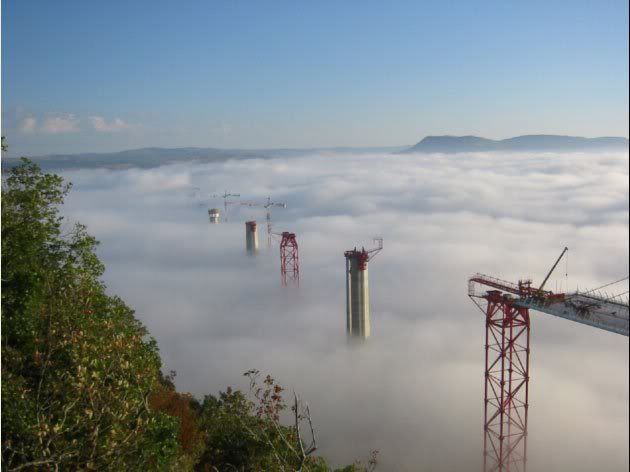
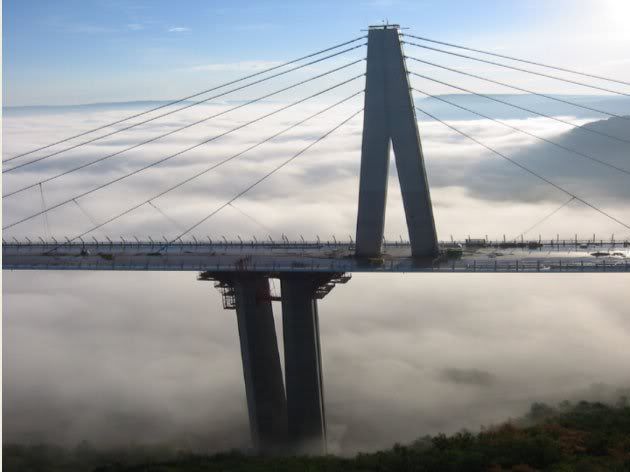
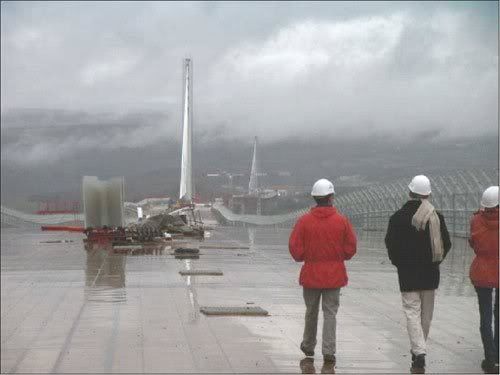
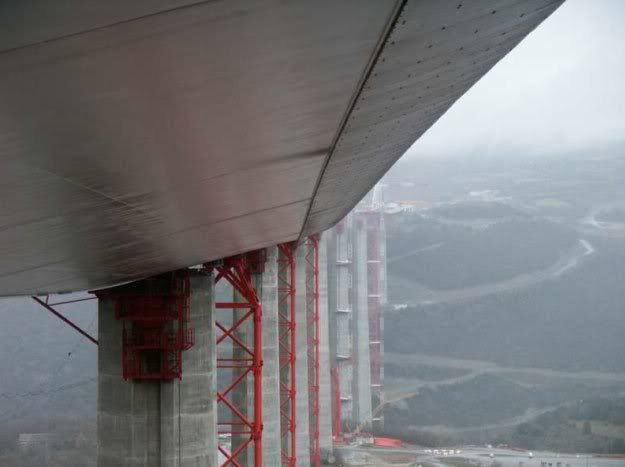

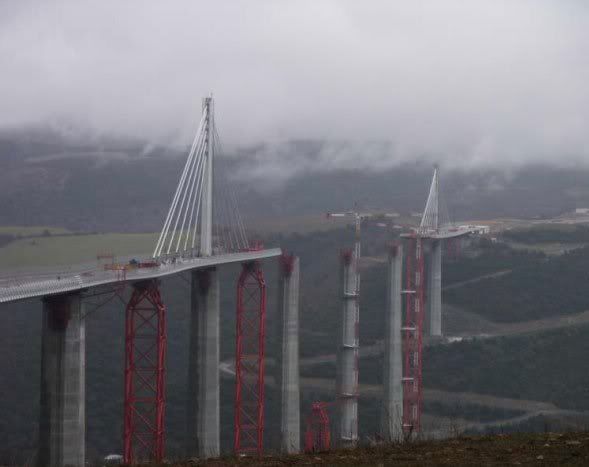
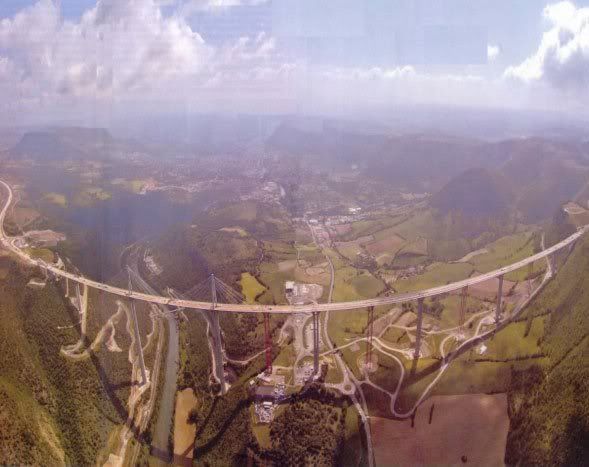
No comments:
Post a Comment